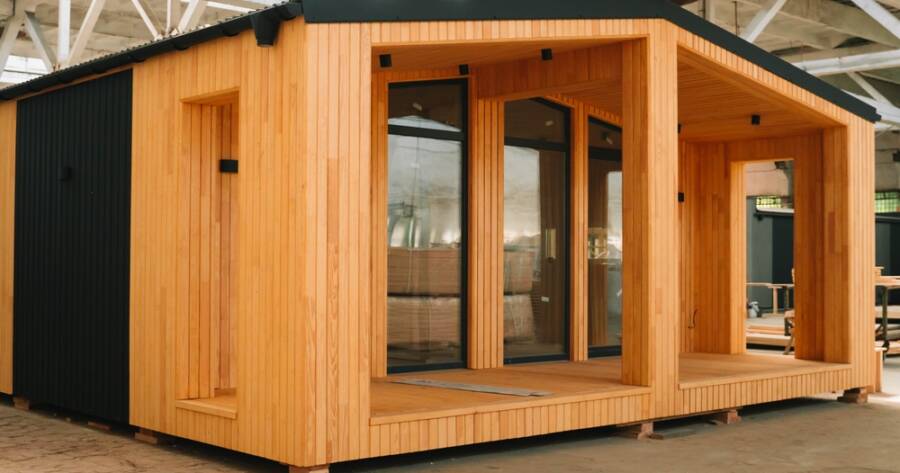The housing market continues to shift, with more people looking for affordable and efficient alternatives to traditional homes. Prefabricated homes have emerged as a popular choice for many due to their faster construction timelines and lower upfront costs. As these homes grow in popularity, it’s important to understand their costs, designs, and long-term value. Here’s a closer look at prefabricated homes and what they offer.
What Are Prefabricated Homes?
Prefabricated homes are built off-site in a factory before being transported to the desired location for assembly. Unlike traditional homes that are built from the ground up, prefab homes are constructed in sections or modules, which are then brought together to form a complete structure. There are several types of prefab homes, including modular, panelized, and manufactured homes, each offering different benefits.
Modular homes are the most common and typically involve multiple pre-assembled sections that are joined together. These homes are fully customizable and can be designed to look like traditional homes. Panelized homes are delivered as panels, which are then assembled on-site, while manufactured homes are built on a steel frame and often offer more affordability. No matter the type, prefab homes are known for their efficiency and cost-effectiveness.
Design Options and Customization
One of the biggest appeals of prefabricated homes is their range of design options. While some prefab homes are sold in predetermined layouts, many companies offer fully customizable plans to suit individual tastes and needs. Whether you’re looking for a contemporary design or a more traditional aesthetic, there are prefab homes available that can match your vision.
Design options also extend to the size of the home. You can find smaller, more affordable one- or two-bedroom homes, as well as larger family-style homes with multiple bedrooms and spacious living areas. Prefabricated homes can also be built with environmentally friendly features, such as energy-efficient windows, solar panels, and green roofs, helping to reduce your home’s environmental footprint and your utility costs.
While customization options are available, keep in mind that these choices may increase the overall cost. The level of customization will depend on the builder and the materials you choose. However, even with customization, prefab homes typically remain more affordable than traditionally built homes.
Cost Factors to Consider
One of the most attractive features of prefab homes is their affordability. Because they are built off-site in a controlled environment, the construction process tends to be faster and more efficient, often leading to lower costs. The factory setting allows for bulk purchasing of materials, and the streamlined construction process helps minimize labor expenses, contributing to a reduction in the overall cost of the home.
However, there are still several factors that can influence the cost of a prefab home. The location of the home, the size, the materials used, and the complexity of the design all contribute to the price. Additionally, you will need to factor in the cost of land, site preparation, and any necessary permits. Prefab modular homes generally cost between $80 and $120 per square foot, making them an affordable alternative to traditional housing.
While prefab homes are generally cheaper than their traditional counterparts, these additional costs can add up. It’s also important to consider the cost of maintenance and repairs over the long term. While prefab homes are built to high standards, like any home, they require ongoing upkeep. Some parts of a prefab home may need to be replaced or upgraded sooner than those of a traditional home, depending on the materials used and the design.
Long-Term Value and Sustainability
When considering a prefab home, it’s essential to look beyond the initial cost and think about the long-term value. Prefabricated homes are not only cost-effective to build but can also be energy-efficient, especially with the right features. Many modern prefab homes come equipped with energy-saving elements like insulation, energy-efficient windows, and appliances, which can help lower your utility bills over time.
Additionally, prefab homes are typically built with sustainability in mind. Many manufacturers prioritize using eco-friendly materials and construction methods that minimize waste and environmental impact. Some companies even offer homes with certifications like LEED (Leadership in Energy and Environmental Design), which ensures that the home meets high environmental standards.
As for long-term durability, prefab homes are generally built to the same quality standards as traditional homes. They must meet the same building codes and regulations, ensuring they are safe and secure. However, it’s important to note that, like all homes, the quality of construction can vary depending on the builder and materials used. As with any home purchase, it’s critical to research builders thoroughly and choose one with a solid reputation for quality craftsmanship.
A Smart Choice for Many Homebuyers
Prefabricated homes offer a unique combination of affordability, speed, and sustainability, making them an excellent choice for many homebuyers. With a variety of design options, cost-effective construction, and long-term value, prefab homes are becoming an increasingly popular option for those looking to build a home quickly and efficiently.
As technology advances and the demand for eco-friendly homes grows, prefab homes will continue to improve in both quality and design. For those willing to embrace this modern approach to home construction, a prefab home can provide a smart, sustainable, and affordable living solution. Whether you’re a first-time homebuyer or looking to downsize, a prefab home could be the perfect fit for your needs.

